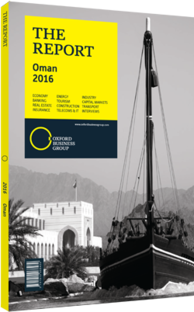Banking
The Company
Bank Muscat (BM) is the leading financial services provider in Oman, with a strong presence in corporate, retail, investment and private banking, as well as in asset management. It was founded in 1982 and grew through a series of mergers and acquisitions during the 1990s. Between 2000 and 2014 BM’s consolidated assets grew at a compound annual growth rate of 15%. Its total assets stand at OR12.5bn ($32.4bn). BM has the largest network in Oman, with 144 branches, 440 ATMs and 4500 point of sale terminals, and employs more than 3400 people. Its international operations include branches in Saudi Arabia and Kuwait, and a representative office in Dubai, but account for only 6% of total loans. However, BM has announced that it is looking to expand by seeking a commercial banking licence in the UAE.
With a market share of 44% of banking sector assets in Oman, BM is almost three times the size of its closest competitor. It is the dominant franchise in Oman and the largest listed entity on the Muscat Securities Market, with a market capitalisation of over OR1.2bn ($3.1bn). However, given its high dependence on Oman (95% of total assets), the macroeconomic slowdown resulting from low oil prices may have a moderately negative impact on BM’s financial performance in the near to medium term. An increasingly competitive landscape in Oman, especially in retail banking, is causing net interest spreads – and consequently profit margins – to shrink. Also, funding costs may rise as the government borrows significant amounts to finance its budget deficit, leading to a situation of shrinking liquidity in Oman’s banking system.
Performance
Despite a moderately challenging outlook in Oman’s banking sector, BM reported good results for the first nine months of 2015. The bank’s long-term growth story is intact, driven by government spending on infrastructure and favourable demographics. BM benefits from its shareholding structure, as the Royal Court of Affairs owns 25% of its shares. This has traditionally helped the bank in winning mandates for large infrastructure projects and gives BM superior access to low-cost deposits.
In the first nine months of 2015 BM reported net profit of OR136m ($352.1m), up 8% on the same period in 2014, driven by 3% growth in net interest income and a 9% rise in non-interest income. Total loans, including Islamic financing, grew by 10% to OR7.05bn ($18.2bn), while total customer deposits, including Islamic deposits, grew by 12% to OR7.33bn ($19bn). Despite macroeconomic headwinds, credit losses were under control. Impairment for credit losses for the first nine months in 2015 was OR42.7m ($110.6m), up from OR40.7m ($105.4m) for the same period in 2014. Recoveries from impairment for credit losses was OR25.5m ($66m) for the nine months in 2015, up from OR19.6m ($50.7m).
BM is well capitalised, with a capital adequacy ratio of 16%, which is above the Central Bank of Oman’s requirement of 12.6%. This acts as a buffer against any oil price-driven loan deterioration and ensures the bank can continue to grow its loan book without needing to raise capital in the near term, while peer banks are raising capital to meet requirements.
BM has a consistent track record of dividend payments to shareholders for more than 15 years. In March 2015 BM increased its dividend to 45% of capital, up from 40% the previous year. The dividend comprised 25% in cash, 5% in bonus shares and 15% in the form of mandatory convertible bonds. Given healthy profitability in 2015, the bank is likely to maintain dividend payments in the coming year.
Since oil prices began declining in November 2014, BM’s stock price has fallen by around 20%. Currently, BM stock appears attractive as it trades at historically low valuations, at a price to earnings multiple of 7x, and a price to book multiple of 0.8x. BM’s stock is now trading at a large discount to regional peers such as Qatar National Bank, First Gulf Bank and Al Rajhi Bank.
You have reached the limit of premium articles you can view for free.
Choose from the options below to purchase print or digital editions of our Reports. You can also purchase a website subscription giving you unlimited access to all of our Reports online for 12 months.
If you have already purchased this Report or have a website subscription, please login to continue.

